In previous weeks, we mentioned that it is impossible to adapt up or down between 125 Volts and 250 Volts. However, you can adapt down to 125 only if the power source is rated as a 125/250 Volts connection. So what factors go into determining if you can step down the voltage?
Let’s start by breaking down the anatomy of each voltage. The amount of voltage in a connection is determined by the number of hot wires being used.
So for a regular household outlet which is typically 125 Volts, there is only one hot wire, one neutral, and one ground. For a NEMA 6-20 outlet, often associated with 250 Volt AC Units, there are two hot wires, no neutral, and one ground.
Another example is your 50 Amp range outlet and a 50 Amp welder outlet.

A NEMA 14-50 outlet has two hot wires, one neutral, and one ground. This means it is able to make two complete sets of 110 Volts by using one hot, the neutral, and the ground. The NEMA 6-50 welder outlet has two hot wires, no neutral, and one ground, meaning it cannot make two complete sets of 110 Volts. Since it is missing a neutral, it cannot be broken down into two sets of 110 Volts.
It is the presence of neutral or ground, and the number of prongs, that determines if you can adapt down from a 250 Volt connection. Most 3-prong 250 Volt connections do not have either neutral or ground, but 4-prong 250 Volt connections do, allowing you to adapt down to a 125 Volt application.
When a connection is 4-prongs and rated at 125/250 Volts, it is best to refer to it as exactly that. When talking about electrical connections, a lot of people like to just simply say “250 Volts.” While this is correct, it is important to remember that 3-prong connections can also be 250 Volts, which makes a big difference. If you can’t remember 125/250 Volts, then add the number of prongs when talking about 250 Volt connections. That will help us, and other electricians, to diagnose the problem and find a solution.
We offer adapters that can adapt down to 125 Volt connections.
AD1430520 will let you use a regular household plug in a 4-prong dryer outlet. AD1450520 will do the same for a 4-prong range or generator outlet. We even have adapters for 4-prong generator outlets.
The adapters for 4-prong generator outlets can be used to power one, two, or even four household connections.
Since there are two hot wires in a 4-prong generator outlet, the power can be split up into more outlets. You may recognize this topic if you have read about or watched a video based on a previous topic; Power Distribution Units.
If you have any more questions about the differences in voltages, please leave a comment or reach out to us with a text, phone call, or email.

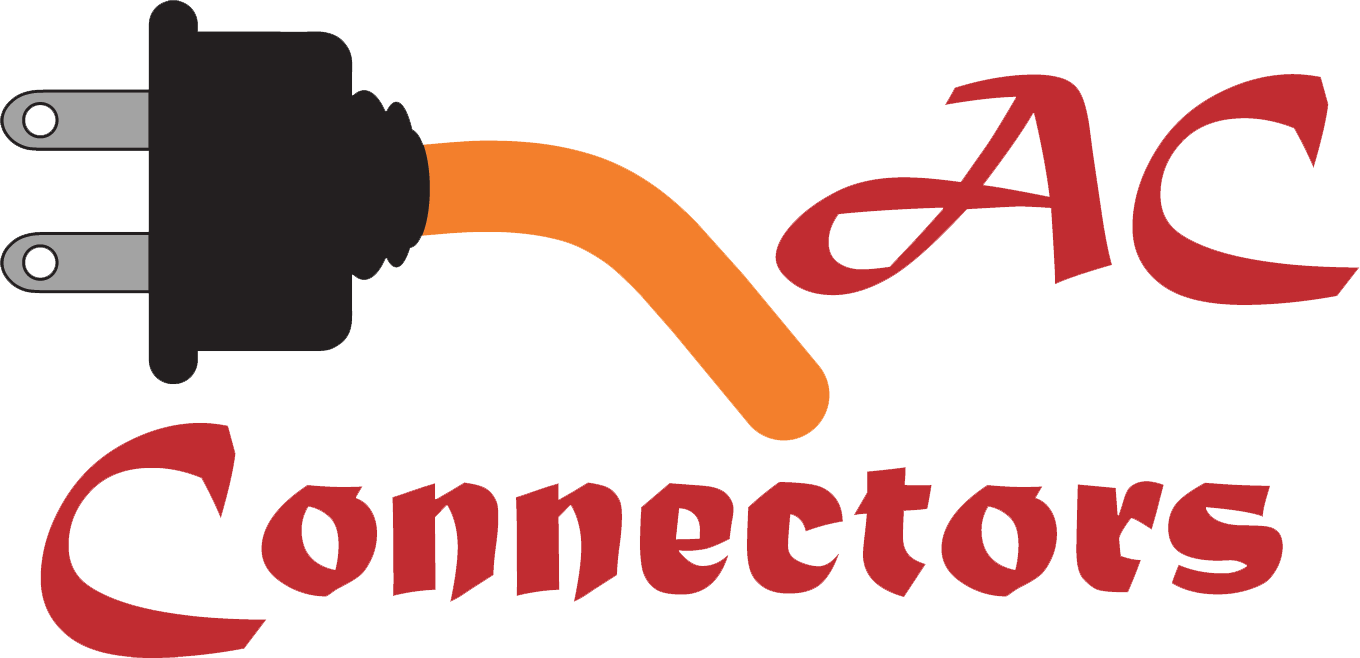

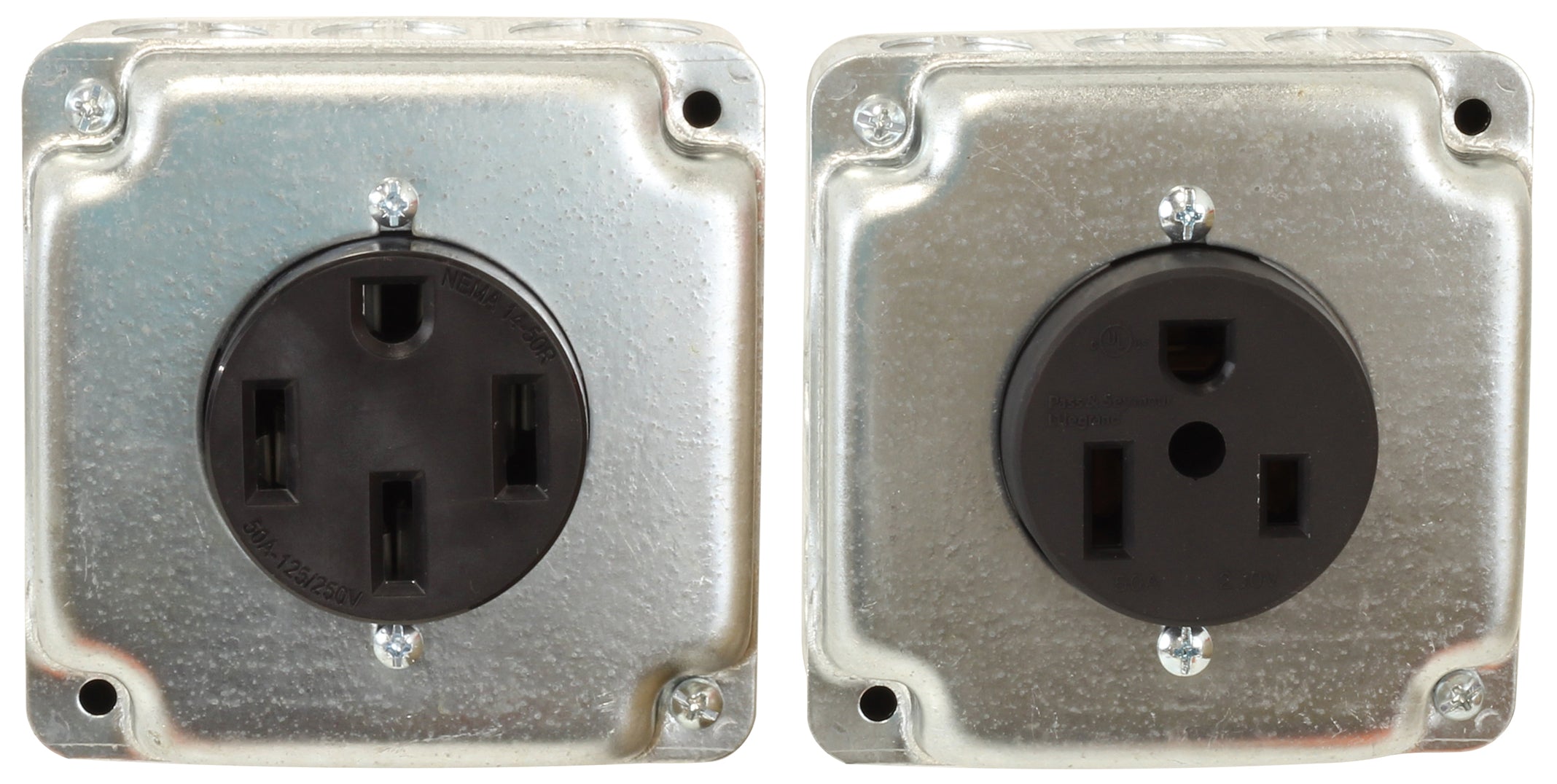
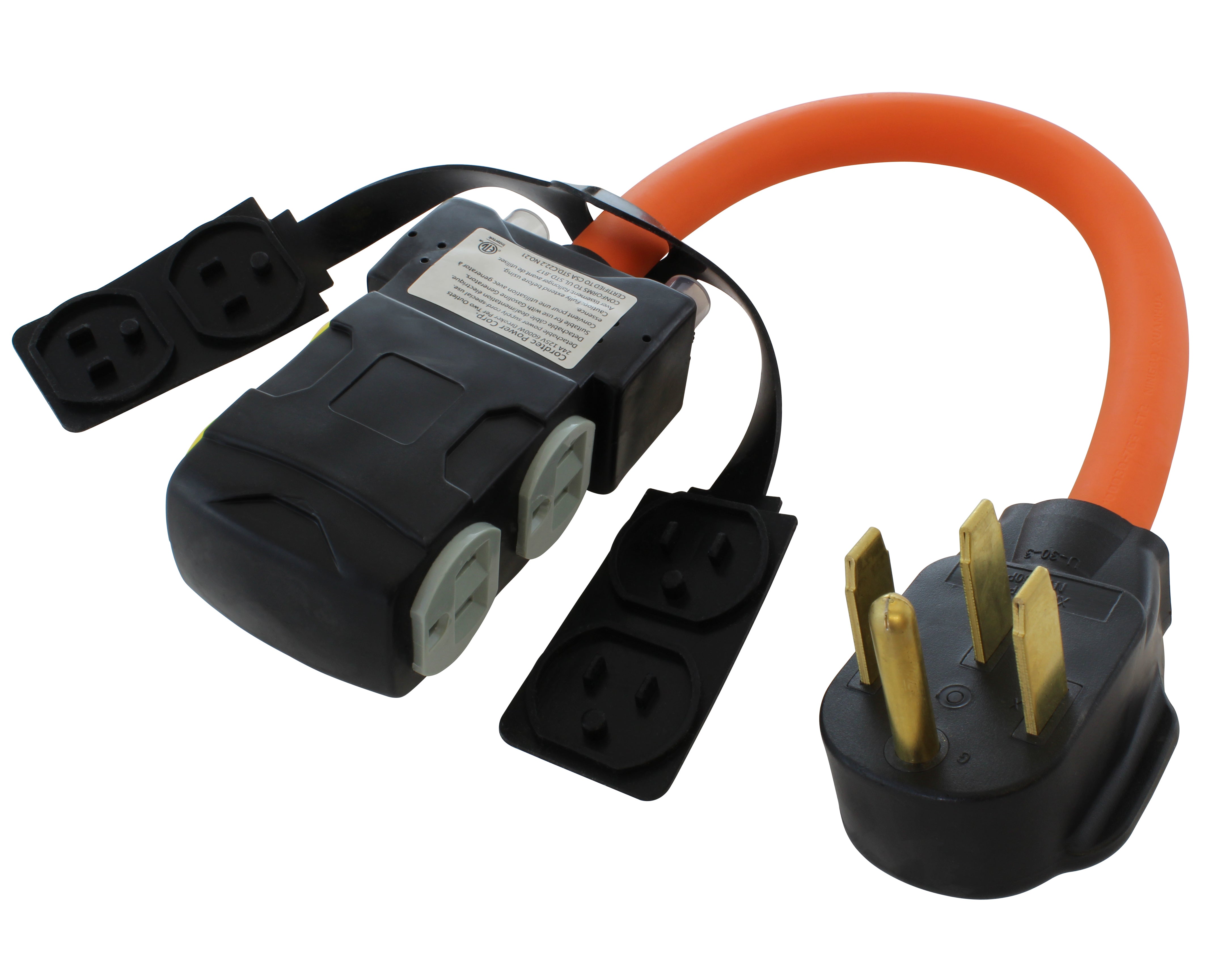
![AC WORKS® [ASINSS2PBX-G] 50A Locking 4-Wire CS6375/ SS2-50 Heavy-Duty Transfer Switch Inlet Box](http://acworks.com/cdn/shop/files/ASINSS2PBX-0_0206b362-7c90-42a5-8754-0685c13dab7e.jpg?v=1758051675&width=2500)
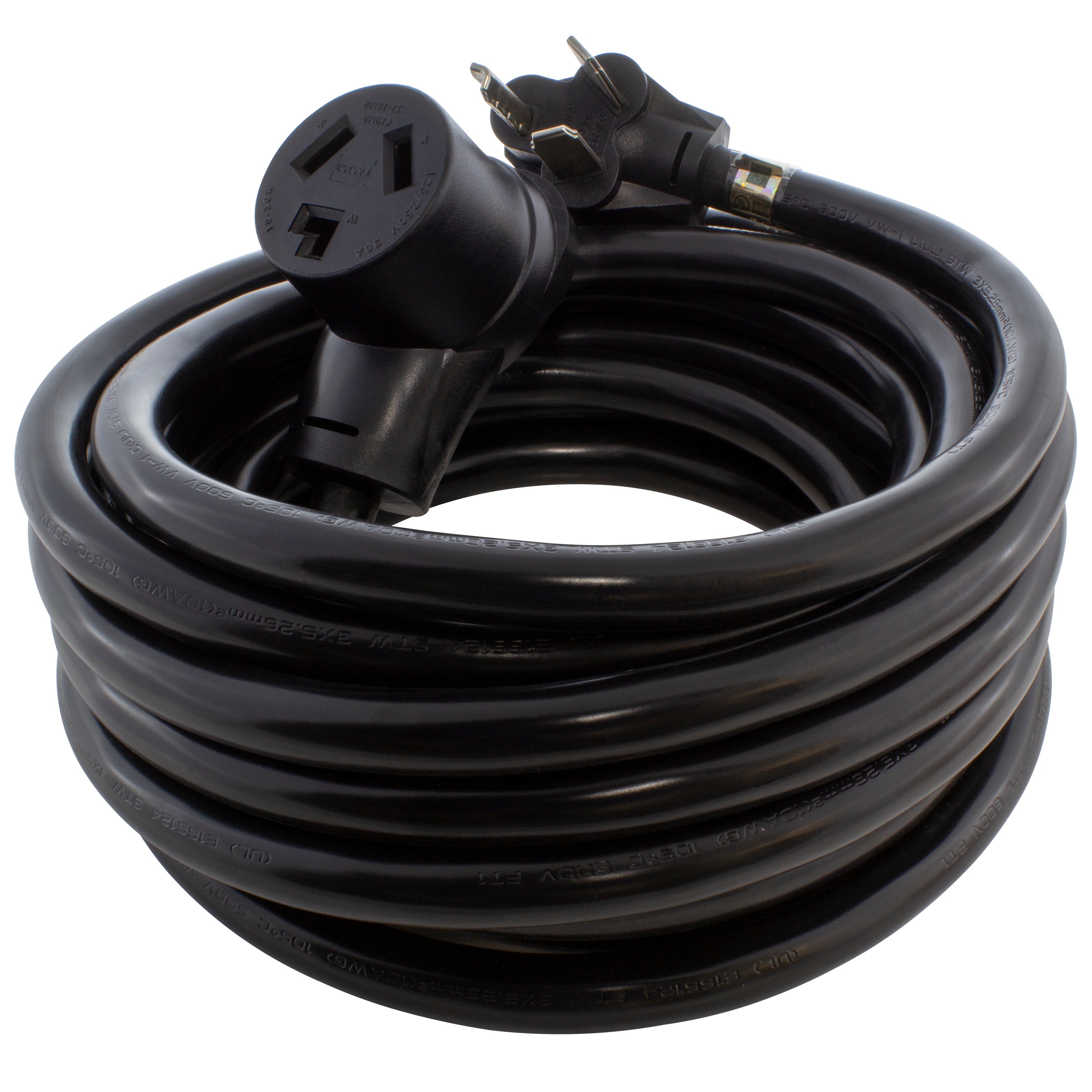
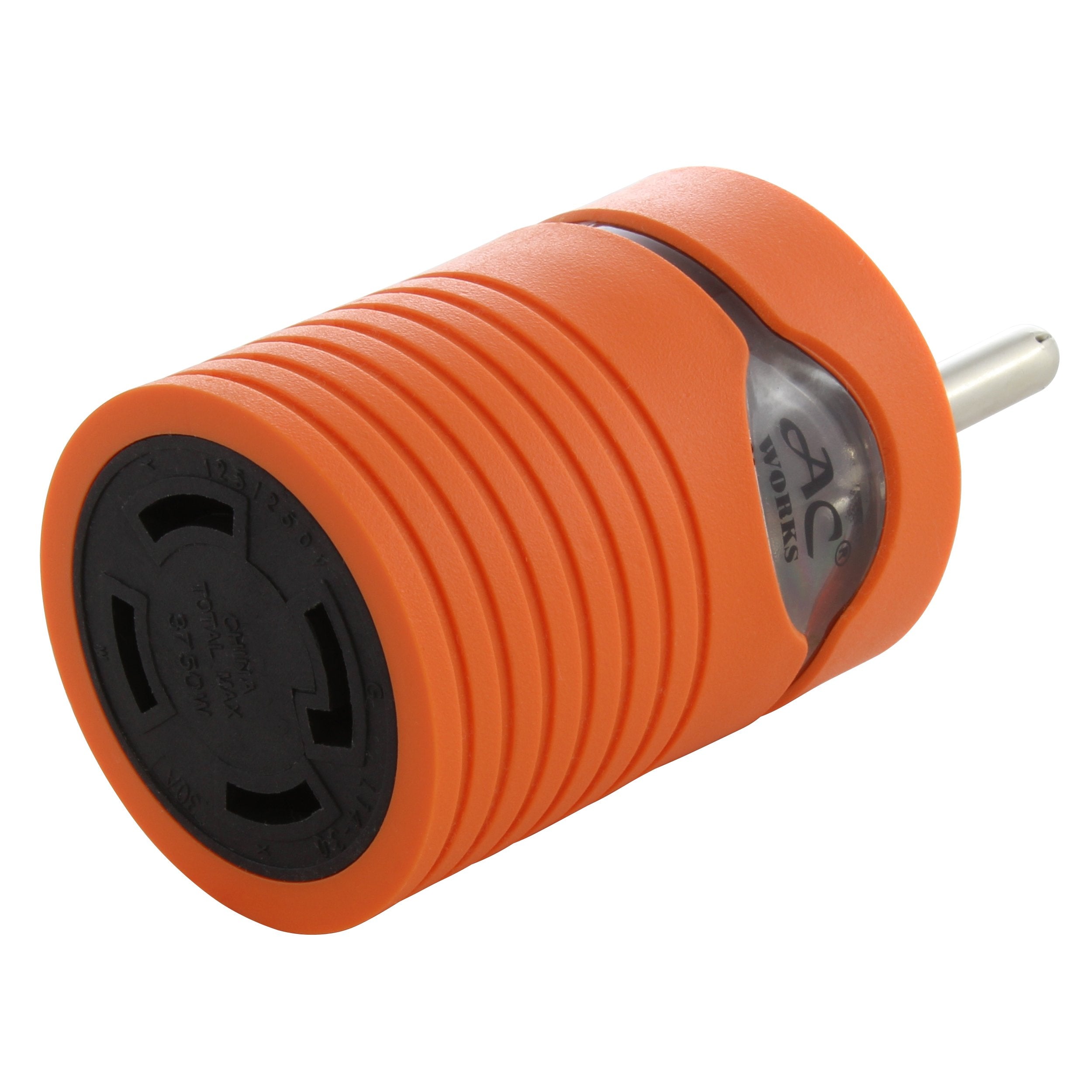
![AC WORKS® [S1430CBF520] 1.5FT 14-30P 4-Prong Dryer Plug to (4) Household Outlets with 24A Breaker](http://acworks.com/cdn/shop/products/S1430CBF520.jpg?v=1666103519&width=4656)

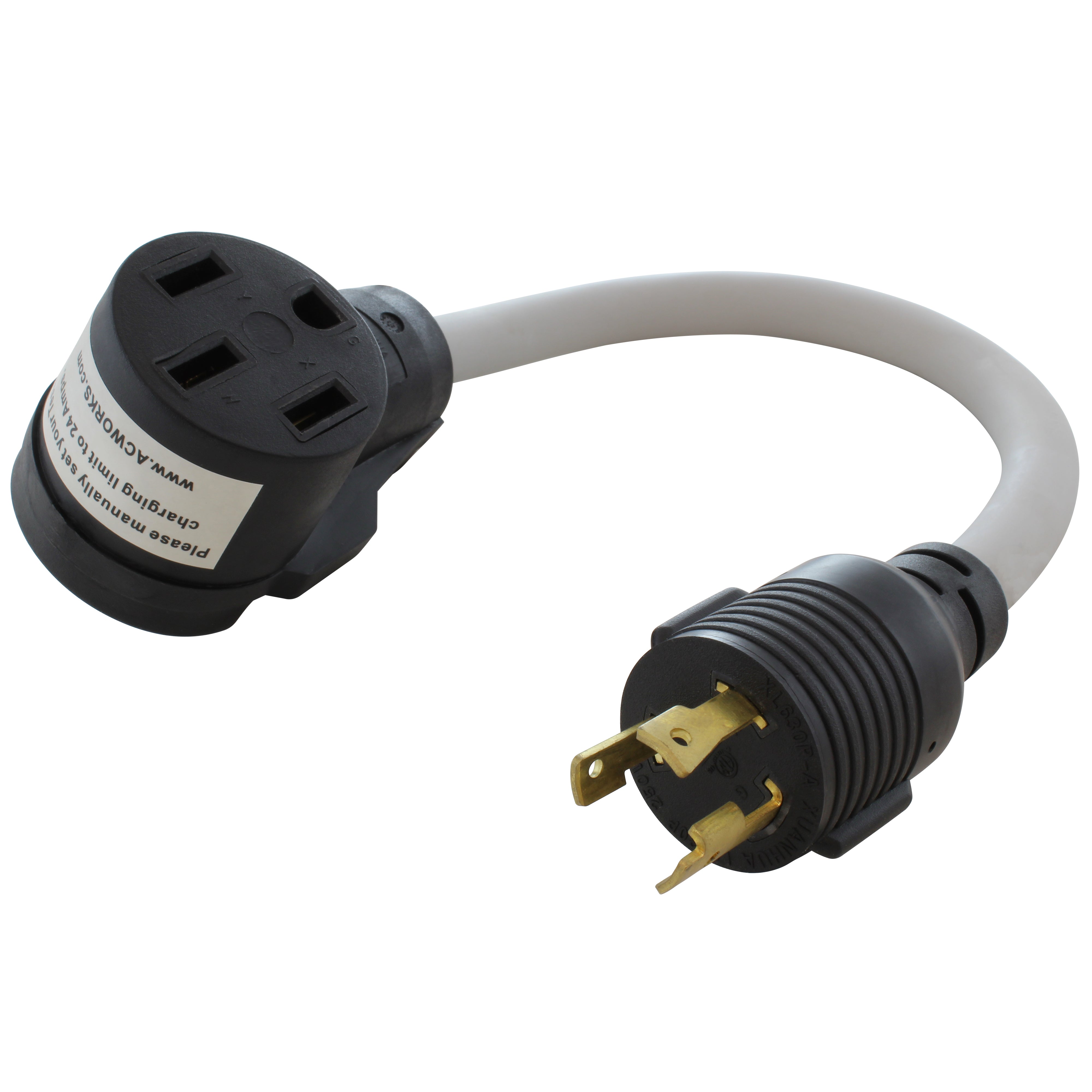

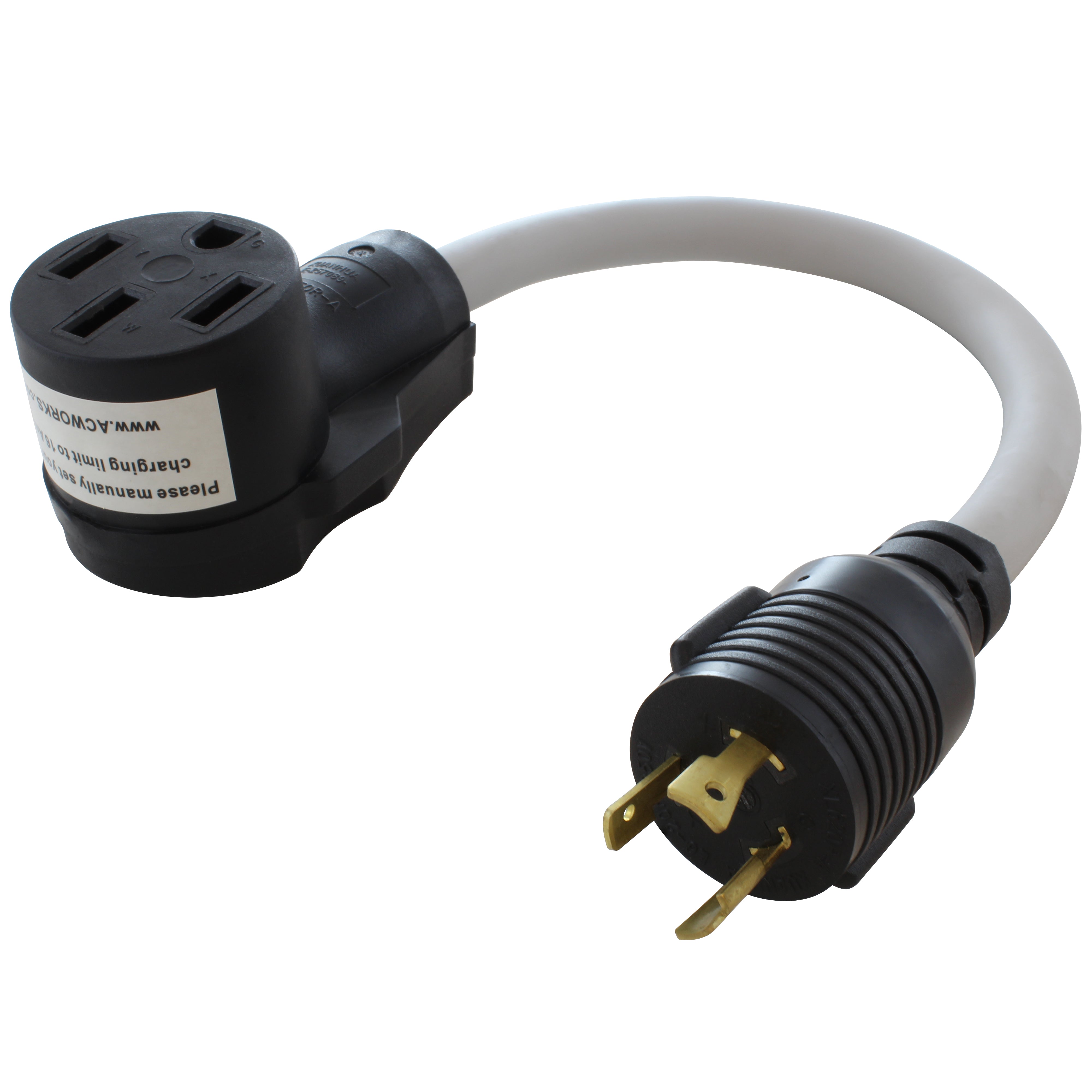



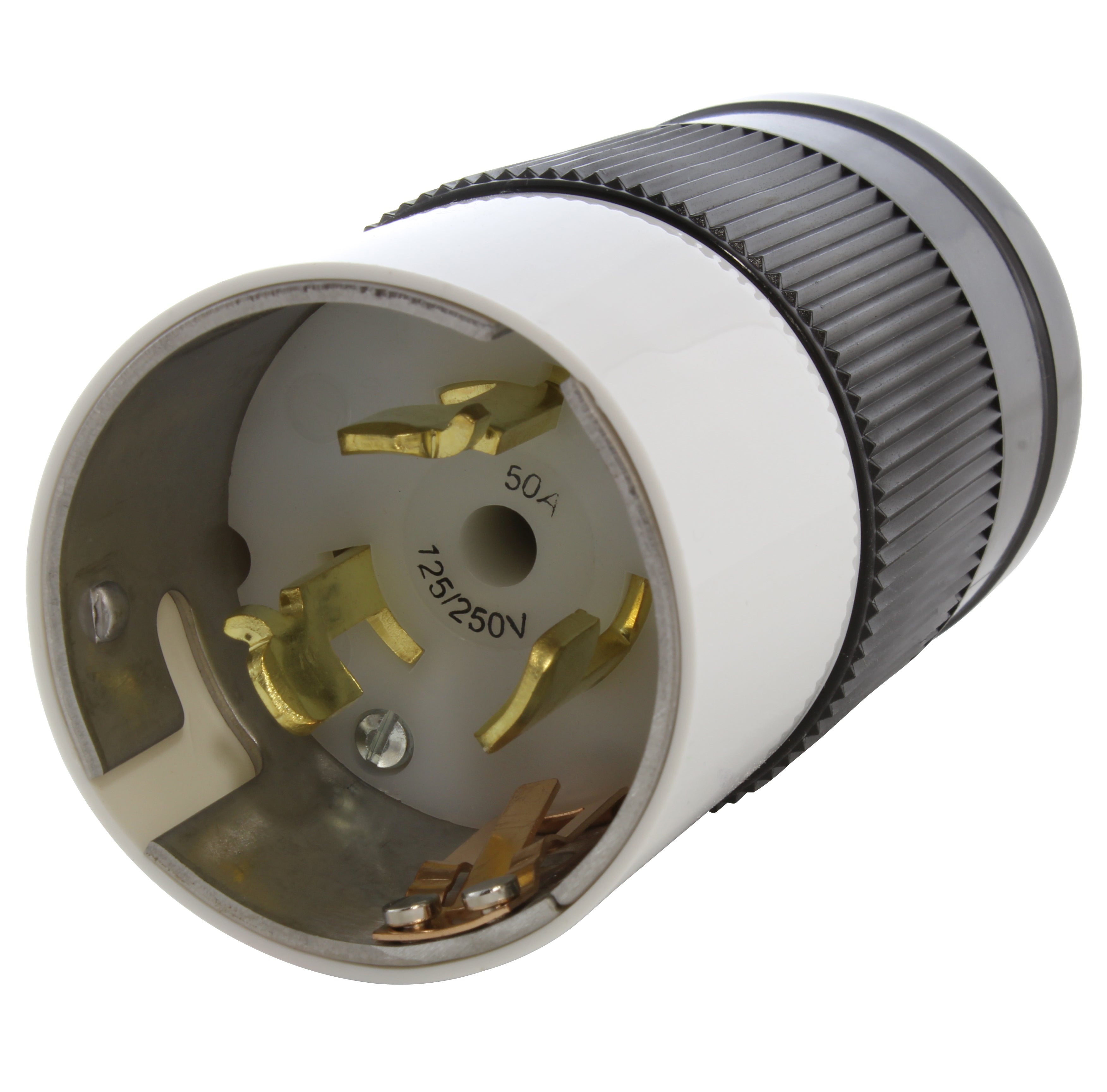


![AC WORKS® [ADV104] 3-Prong Heavy-Duty V-DUO Household Outlet Adapter](http://acworks.com/cdn/shop/products/ADV104-0.jpg?v=1605738768&width=3128)
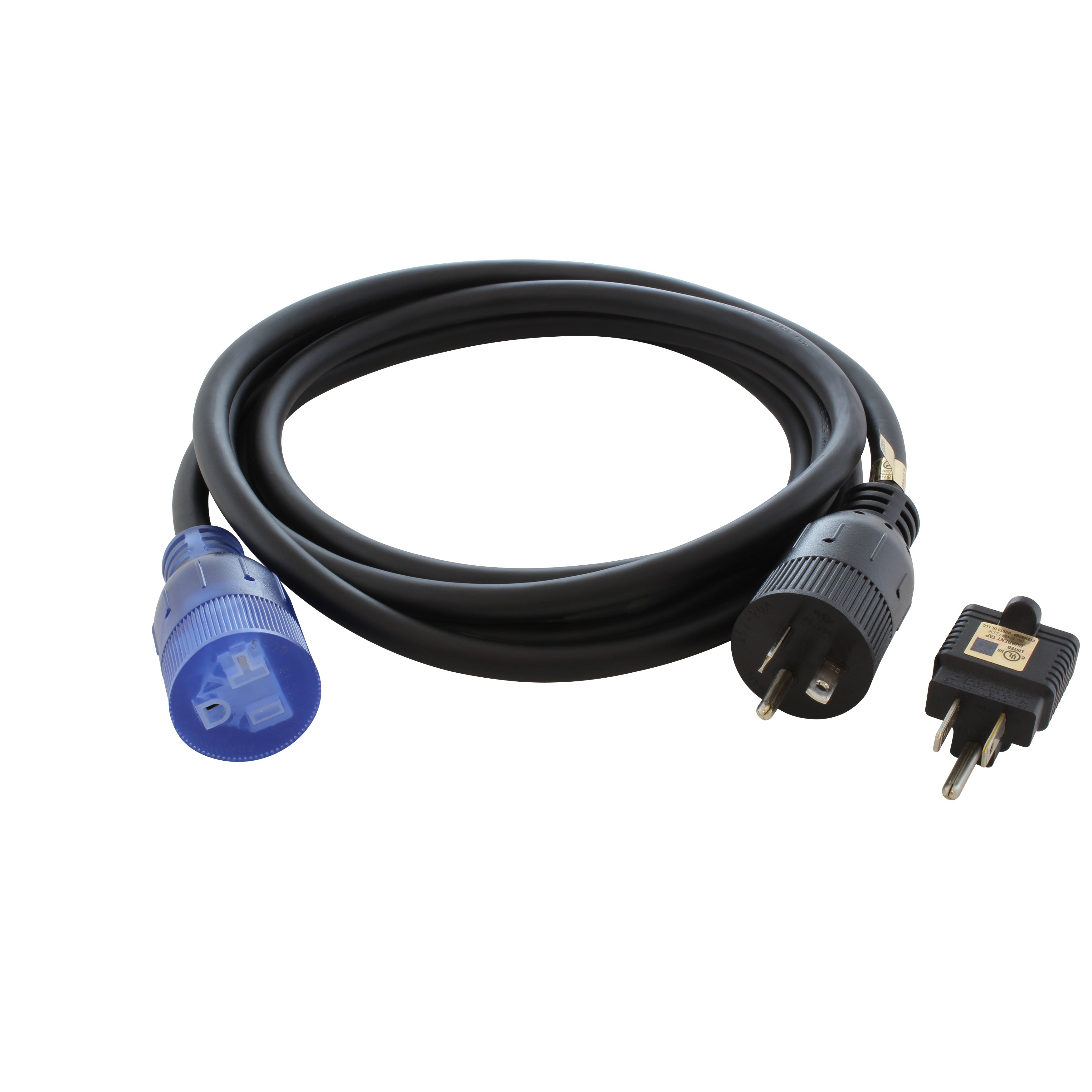
![AC WORKS® [XH515520] 15A to 15/20A 125 Volt Plug Adapter with ETL Safety Approval](http://acworks.com/cdn/shop/files/XH515520-0_daea425a-f439-48df-bb75-052167057f12.jpg?v=1729091519&width=2500)
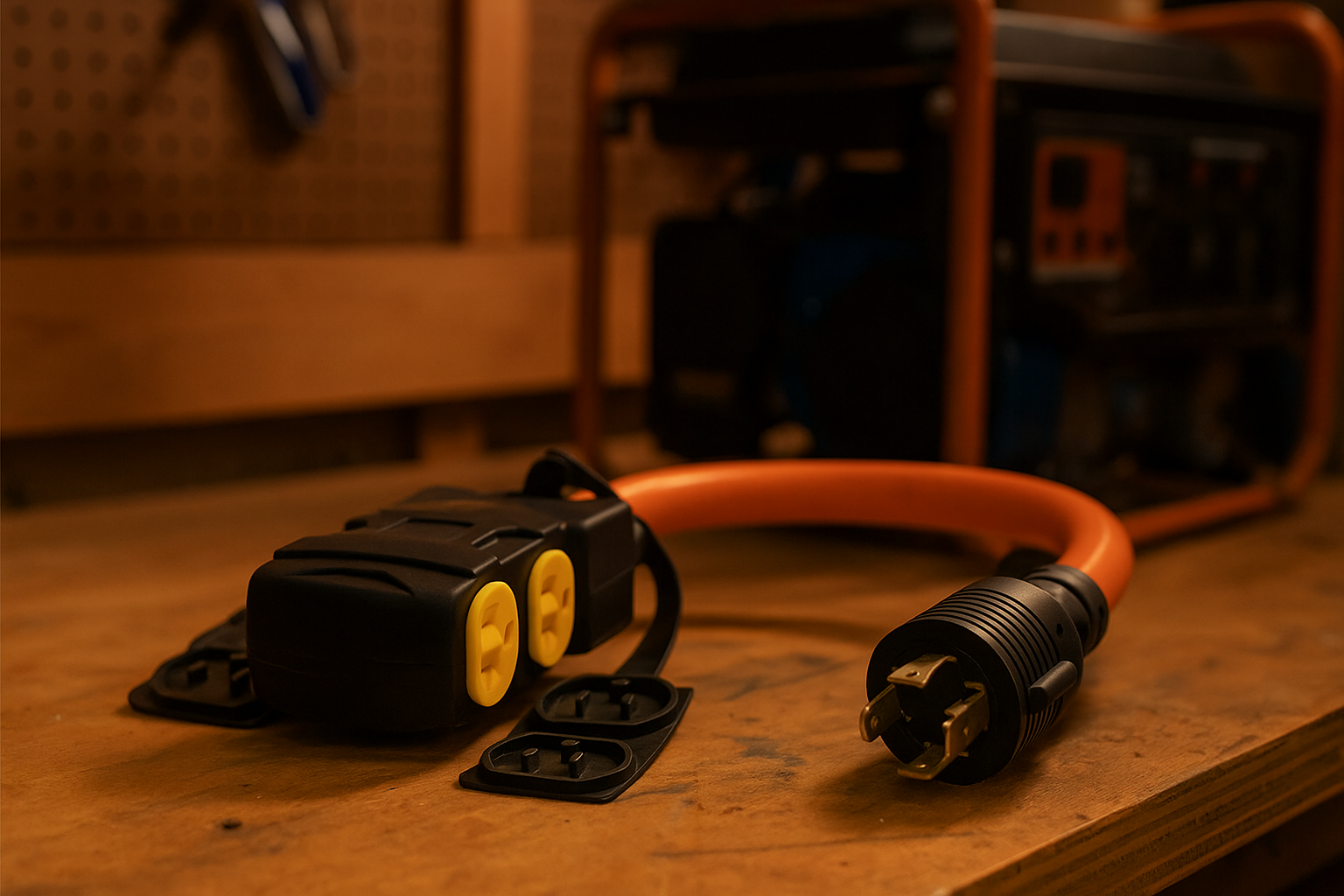
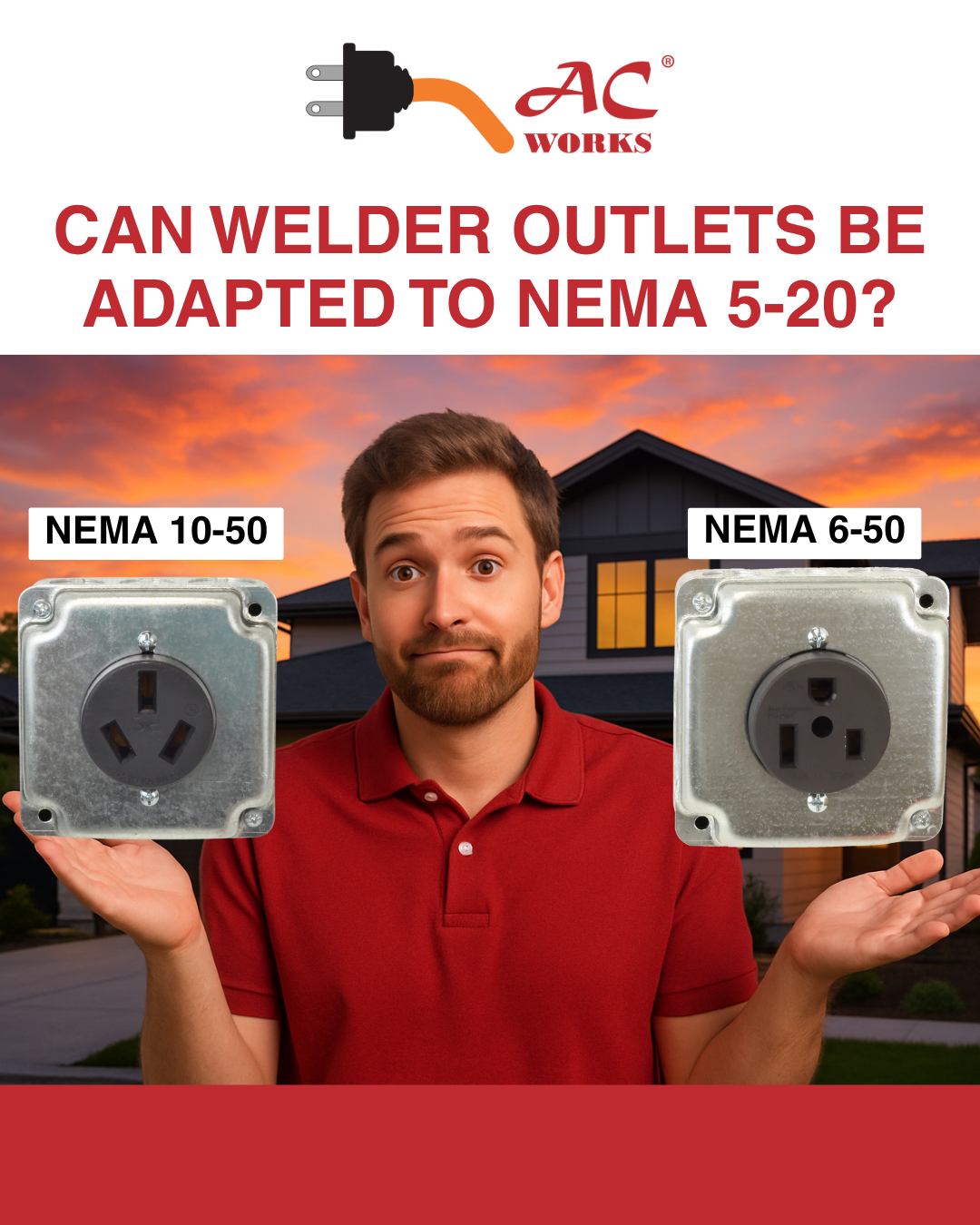
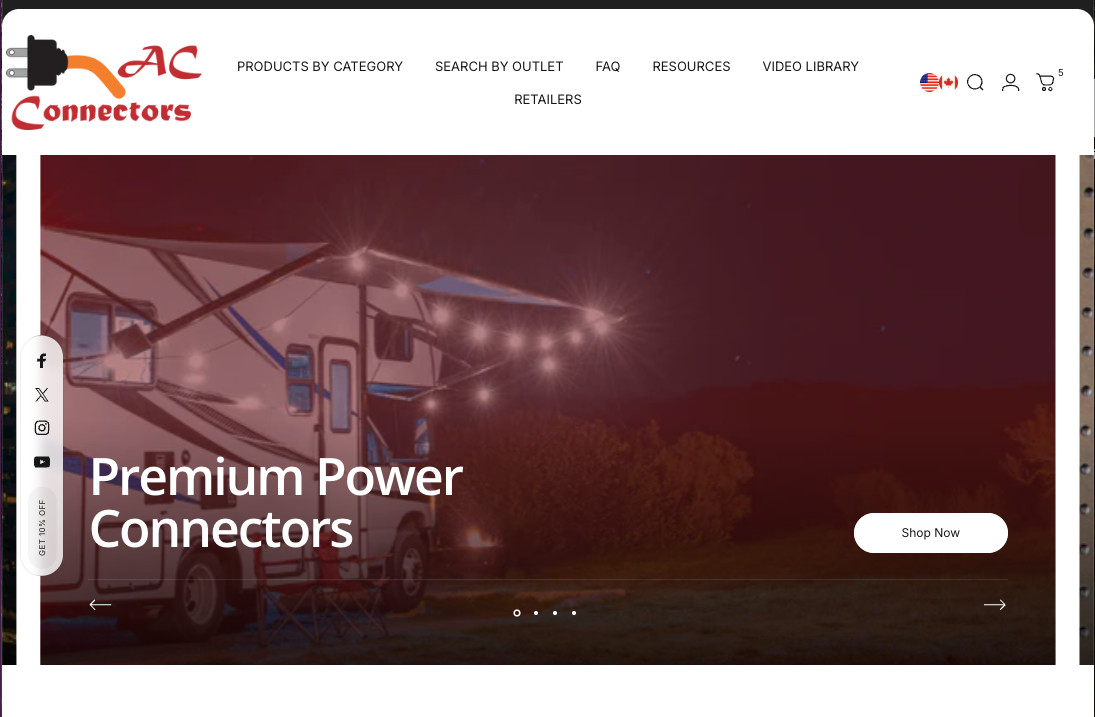
Share:
The Little Green Wire
JUST ARRIVED! Flexible Adapters with 20 Amp Circuit Breakers
21 comments
Hello Hayden. We actually carry the exact adapter you are looking for so you don’t have to worry about trying to wire one yourself.
Compact: https://acworks.com/products/wd1450650-50amp-14-50-plug-to-6-50r-welder-adapter?pos=1&sid=10a9bba9c&ss=r
Flexible: https://acworks.com/products/wd1450650-018-nema-14-50p-to-6-50r-welder-adapter?pos=2&sid=10a9bba9c&ss=r
HEY THERE, WAS HOPING MAYBE SOMEBODY COULD HELP ME OUT HERE. I purchased a welder that requires a 220v input. I currently live in an RV, but always have hookups, so rather th\an attempt to wire a 220v outlet I thought I could take advantage of the 30/50 amp outlets around here. I finally arrived at the plan to make an adapter, a 50 amp, specifically a 14-50p to a NEMA 6-50r. I was feeling pretty confident this could be done, I was finding it challenging to find this adapter anywhere convenient at least. so I went to the depot and figured I would purchase a 50 to 30 amp RV plug, chop off the 30 sides and wire it up. I was under the impression it would be pretty straight forward and ultimately I would be able to simply leave the white plug out. green to green ground, then black to one hot and red to the other. The problem it ran into was that I guess the way they make these adapters, seeing as it was for a 30 amp, they simply leave one 50 amp prong, the red lead, empty. so I have 14-50p that has no red wire. can I just add my own wire to the last prong and still leave the white guy out?
Hello Dean. Does your heater come with a plug at all? Or does one need to be wired on? Please send images of your heater’s plug to me at ac-creative@acconnectors.com. From there, I can see which direction would be best.
I bought a heater manufacturer in the UK, so it is 230v, 13amp, their wiring shows 3 prongs, 1 hot, 1 neutral and the ground, it is 1000kw-2000kw. Do i need to buy a nema 6 20amp 250v plug or can i just buy a UK to USA 125v adapter?
Hello Fred. We actually already have an adapter you can use that will save you time and money: https://acworks.com/products/ac-works-adl1420620-locking-adapter-nema-l14-20p-20amp-125-250volt-4-prong-generator-locking-plug-to-nema-6-15-20r-250v-15-20amp-t-blade-adapter?pos=1&_sid=40f5dadf6&ss=r
L14-20 plugs by themselves can be expensive, and this adapter saves you time with testing and looking for the right cable.